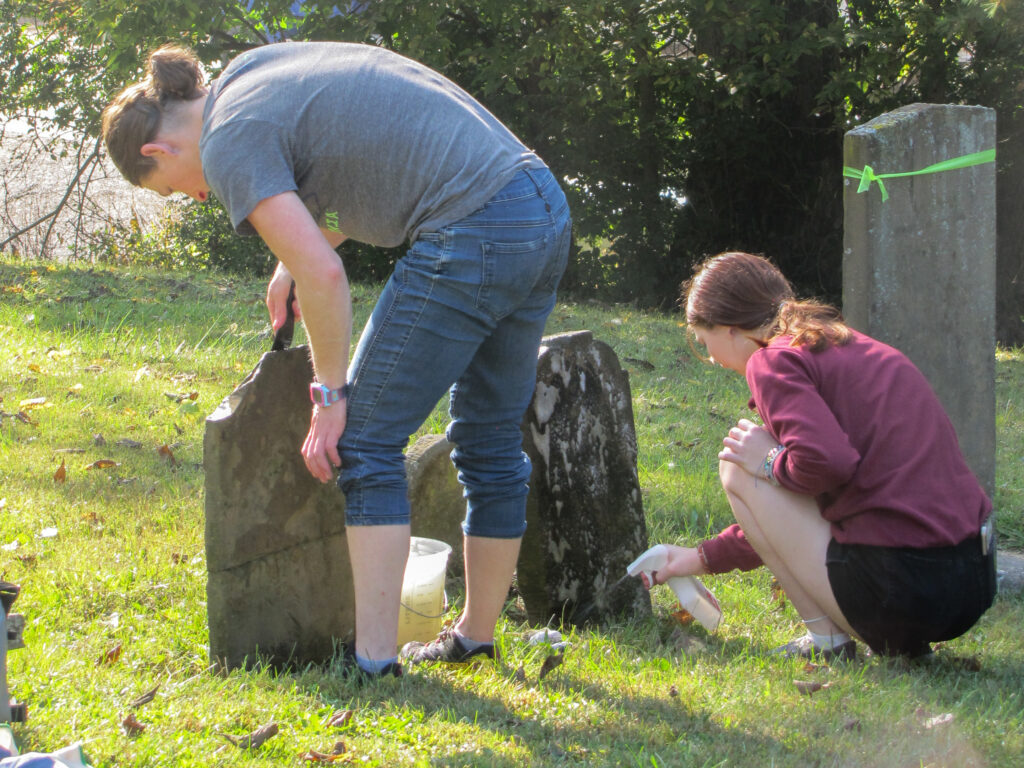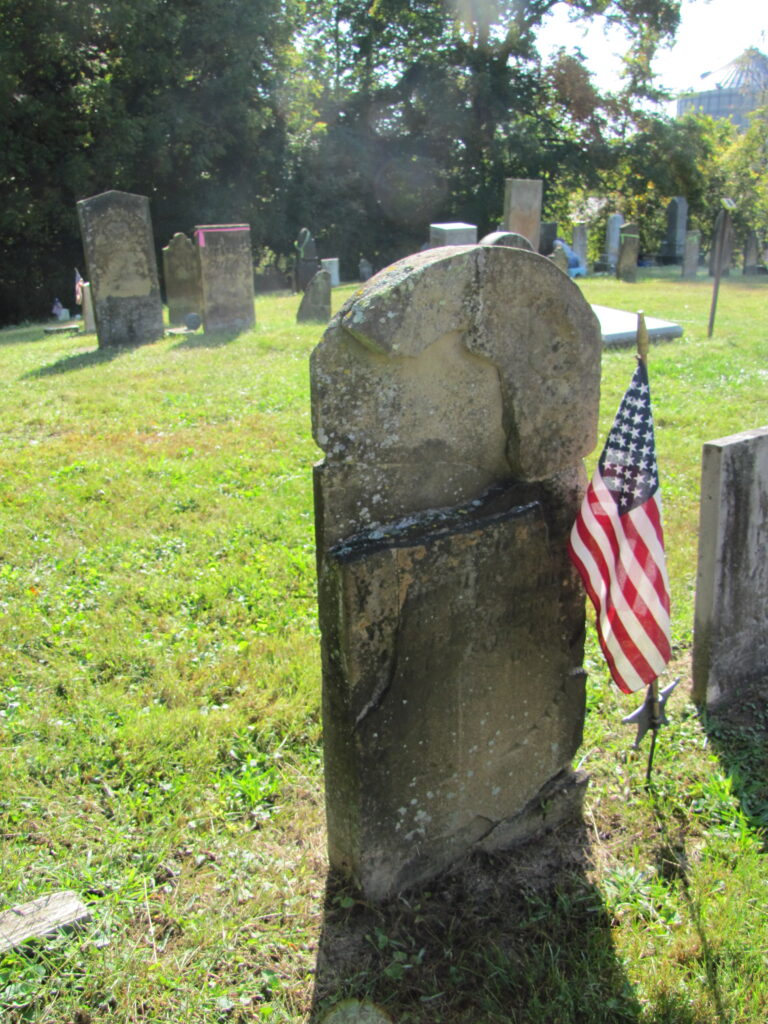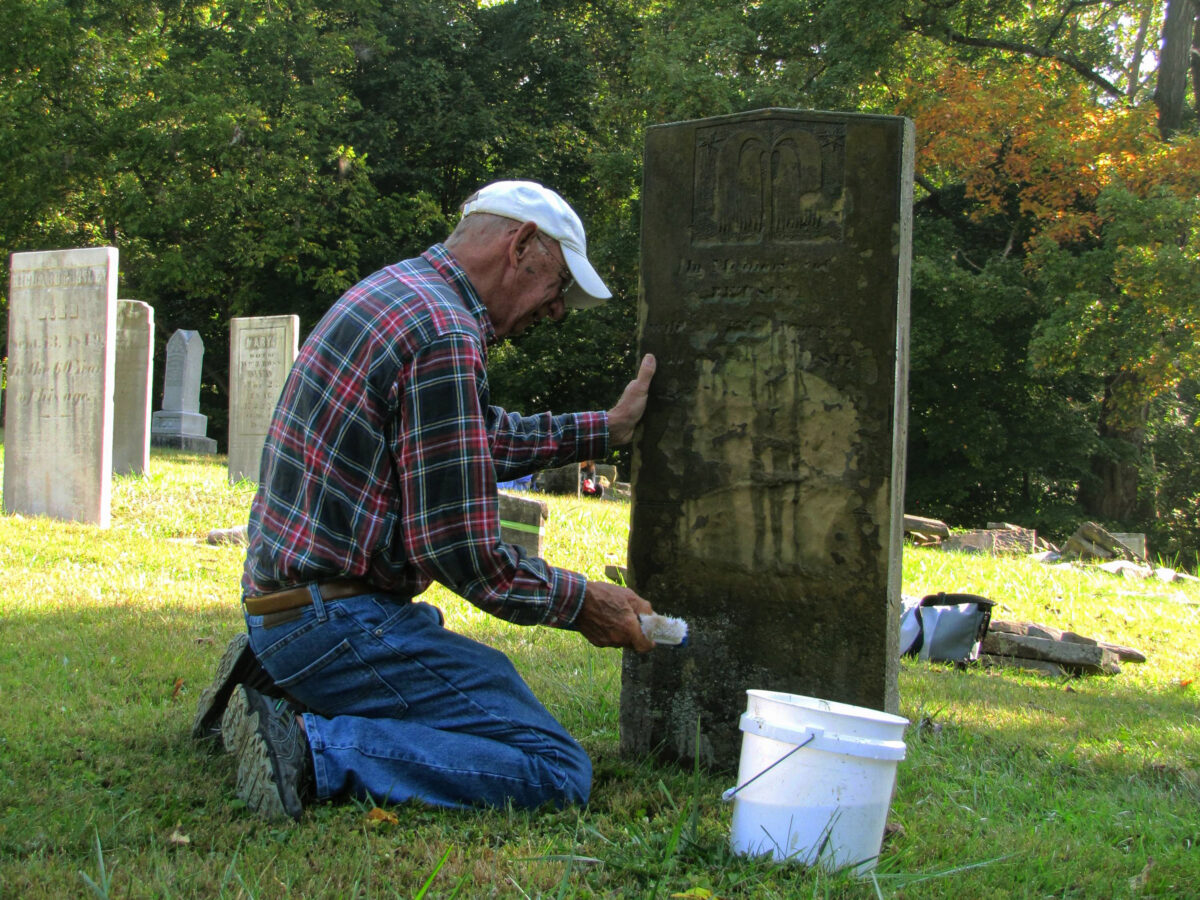Kristine Pargeon hunched over a small headstone, using a scalpel to carefully strip moss from its surface. At the same time, her 15-year-old daughter Stella crouched just above the damp grass, her knees to her chest, spraying D/2 Biological Solution on a neighboring headstone.
Although silence is typical on a Saturday morning at the Old Colony Burying Ground on Granville’s Main Street, it was broken by the soft scratching sounds of dozens of toothbrushes scrubbing against headstones and the hiss of hoses spraying water on Sept. 30, just after the sun had risen over the horizon and illuminated dewdrops clinging to blades of grass.
Stella saw posters advertising the volunteer opportunity in the halls of Granville High School, where she is in the midst of her first year. It was the family’s first time attending a headstone cleaning at the village cemetery — a tradition that dates to 1991.

This year, about 35 volunteers, ranging in age from 8 to 80, dedicated what could have been a restful Saturday morning to the work of preserving local history.
“This volunteering experience has been fun,” Stella said as she meticulously guided a small wooden stick through curves on the face of the headstone to loosen the buildup. “I saw the posters in the hallways and knew the history here was really important, so I told my mom we should go.”
Kristine, 41, looked down at her daughter, and said, “And we get to reveal the names and scriptures, restoring them to be read and appreciated. Right, Stella?”
Stella grinned and nodded as Lyn Boone, 74, approached.
“Should we figure out who you’re cleaning off?” Boone asked the pair.
In 1855, a man developed a key to the Old Colonial Burying Ground, mapping each grave site and recording the epigraph on each. If a visitor stumbled across a headstone they could no longer read, they could map the grounds, basing their location off the nearest readable stone, and find what the inscription on the stone once said and who was laid to rest beneath it.
“Oh,” Boone began, holding the key close to her face, “this is just a baby.”
The grave belonged to a 21-month-old infant who passed away in 1924.
“His parents are grateful for your volunteering,” Boone told the pair.
Lyn and Keith Boone, residents of Granville, are the faces behind the event. Lyn was invited to join the Granville Union Cemetery Board 10 to 15 years ago and has supported the cemeteries ever since.
Lyn credits Flo Hoffman, the first institutional archivist at Denison University, for these events’ success.
Hoffman, who passed away in 2017, spearheaded historical conservation in Granville; and the Boones have dedicated themselves to learning about cemetery upkeep and attended seminars in New England on how to clean the headstones and repair them.
Lyn’s husband, Keith, 76, oversees the latter upkeep. He straightens leaning headstones, signified by a pink bow, by filing the cavities in the ground beneath them with dirt. He also rebuilds deteriorating headstones.
Although some headstones have weathered beyond recognition, the Boones are dedicated to preserving the historic stones.
The first burial at the Old Colony Burying Ground dates back to 1806, meaning some of the stones in the cemetery represent the village’s original residents, including Hannah Spellman, who passed away in 1811.

The Village of Granville was settled by the Licking Company, a group formed in Granville, Massachusetts and Granby, Connecticut, when the company migrated west in 1805. The cemetery was established the same year on the first town plat of Granville.
Since then, the park-like setting has provided residents with a historically rich escape.
Though there are about 950 marked graves, Lyn said there’s as many as 2000 more unmarked burials in the cemetery.
“There are as many unmarked graves as there are stones,” she said.
Over the years, organizations across the community have contributed to upkeep at the aging cemetery. In mid-September, for example, the Granville Chapter of the Daughters of the American Revolution helped restore and replace the historic iron gates, initially installed at the cemetery in 1912.
A few graves beyond where the Pargeons worked, another mother-and-daughter duo, the McCulloughs, worked on a headstone that needed upkeep, signified by a green bow.
Lyn stood behind them, flipping through pages of the key.
In the row behind the Pargeons, a man in a flannel shirt and white baseball cap knelt in front of a headstone, meticulously scrubbing its surface.
Tom Hankins, 75, is from Utica, Ohio, but has attended this volunteer opportunity for the past six years.
“I have ancestors buried in this cemetery,” Hankins, a member of Sons of the American Revolution, said, his head cocked towards his work. “You just can’t forget about people.”
Brin Glass writes for TheReportingProject.org, the nonprofit news organization of Denison University’s journalism program, which is sponsored in part by the Mellon Foundation. thereportingproject@denison.edu

